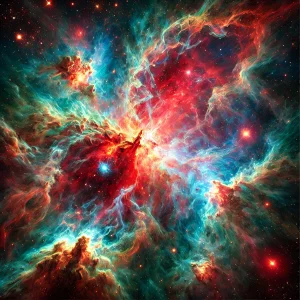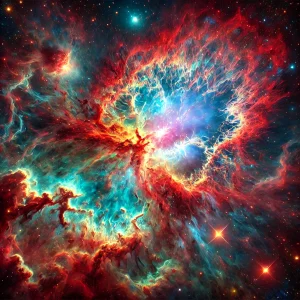Exploring Nebulae: Diverse Types and Dazzling Features
Ever gazed at the night sky and felt a sense of wonder? Those twinkling stars hold secrets, and among the most enchanting are the nebulae. These magnificent cosmic clouds come in various shapes, sizes, and colors, each telling a unique story about our universe. Join us on a joyful journey through the celestial heavens as we explore the dazzling diversity of nebulae!

Journey Through Cosmic Clouds: Meet the Nebulae!
Imagine floating through the vast expanse of space, surrounded by swirling clouds of gas and dust, painted in hues of reds, blues, and greens. These are the nebulae, the universe’s artistic masterpieces, visible across galaxies. Nebulae, derived from the Latin word for “cloud,” serve as the cradles and graves of stars, playing a pivotal role in the cosmic lifecycle. They are the places where stars are born and where they return at the end of their lives.
One of the most famous nebulae is the Orion Nebula, a stellar nursery located in the constellation Orion. It’s a hive of activity, with new stars bursting into existence amid its colorful clouds. The Orion Nebula is a mere 1,344 light-years away from Earth, making it one of the closest regions of massive star formation, and a favorite among astronomers and stargazers alike.
Venturing further out, we encounter the majestic Crab Nebula, a remnant of a supernova explosion observed by Chinese astronomers in 1054 AD. The Crab Nebula is a glowing testament to the death of a massive star. Its intricate filaments and blazing core offer a glimpse into the violent yet beautiful nature of stellar death. As we journey through these cosmic clouds, we see the universe in its most awe-inspiring form.

Unveiling the Wonders: Types and Features of Nebulae
Nebulae come in various types, each with distinct characteristics and origins. One of the primary categories is the emission nebula, glowing brightly due to the ionization of hydrogen gas by nearby hot stars. The vibrant hues of emission nebulae, like the Eagle Nebula, create stunning visual spectacles. The Eagle Nebula’s “Pillars of Creation” are iconic, towering columns of gas and dust sculpted by stellar winds and radiation.
In contrast, reflection nebulae shine with a softer light, reflecting the glow of stars rather than emitting their own. The Witch Head Nebula, named for its eerie resemblance to a witch’s profile, is a perfect example. It reflects the light from the nearby supergiant star Rigel, its faint blue glow reminiscent of moonlit clouds on a clear night. Reflection nebulae remind us of the subtle beauty in the cosmos, where even the faintest light can create a captivating scene.
Lastly, we have the dark nebulae, enigmatic and shadowy clouds that absorb and obscure the light from stars behind them. The Horsehead Nebula is perhaps the most famous dark nebula, its silhouette resembling a horse’s head set against the bright backdrop of the Orion constellation. Dark nebulae are the mysterious veils of the universe, hinting at hidden secrets within their inky depths. They challenge astronomers to peer deeper, to uncover the wonders lurking in the dark.
From the luminous regions of star birth to the somber remnants of stellar demise, nebulae are the universe’s way of painting its history in the skies. Each type, with its unique features and stories, invites us to marvel at the grandeur of the cosmos. As we continue to explore these cosmic clouds, we deepen our understanding of the universe and our place within it. So, next time you look up at the night sky, remember the nebulae, the dazzling clouds that make our universe infinitely more magical.









